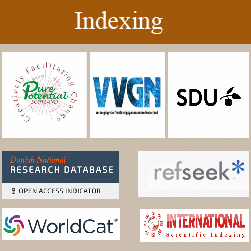Delta virus predominates and potentially predicts liver cirrhosis among co-infected hepatitis b and hepatitis d virus patients in pakistan
Author(s):
Kamran Shafiq, Muhammad Farooq Hanif, Waqas Javed, Smaha Waseem, Sara Khan, Mahboobul- Haq, Ammara Naveed, Abdul Nadir
, Muhammad Haroon
Background: High prevalence of Hepatitis Delta virus (HDV) has been reported from some pockets in Pakistan. Typically, Hepatitis B (HBV) and HDV co-infection could cause severe hepatitis leading to cirrhosis at an early age. We aim to study the clinical outcomes of HBV/HDV co-infection compared to HBV mono-infection in a Punjabi, Pakistani population.
Methods: The retrospective data on all HBV positive patients was extracted from Hepatitis Prevention and Treatment Program (HPTP) of Pakistan Kidney and Liver Institute in Punjab, Pakistan. Majority (32/50) of the HBV/HDV co-infection were identified from Rajanpur clinic of HPTP. Pre-treatment liver tests, HBV-DNA viral load, HDV-RNA viral load; AST to Platelet ratio (APRI) and Fibrosis-4 (Fib-4) were calculated from standard equations. Cirrhosis was based on APRI (≥1.5) or/and Fib4 (≥1.45). HBV-DNA level ≤ 2,000 IU and ≥20,000 IU were categorized as low and high viral load respectively.
Results: 57 (53%) patients were HBV mono-infected and 50 (47%) were co-infected with HDV. Mean age was 36.2±12.99 in the entire cohort and was not different between the two groups. Older age correlated to a higher APRI and Fib-4 scores in both groups. The two groups were predominantly male, 75% in HBV and 76% HBV/HDV co-infected patients. Sharing of toothbrushes was reported to be significantly higher by HBV mono-infected patients; p 0.005. Other risk factors were equally prevalent. 78% of HBV mono-infected and 79% HBV/HDV co-infected patients had ≤ 20,000 IU/ml HBV-DNA. While 56% and 44% had ≤ 2,000 IU/ml HBV DNA levels respectively. APRI and Fib-4 scores were significantly higher in HBV/HDV coinfected; p 0.01. The cirrhosis was diagnosed in 29 patients in HBV/HDV co-infected group, while no patient had cirrhosis in HBV mono-infected group. Within HBV/HDV co-infected group, mean HDV-viral load was significantly higher compared to HBV viral load; p 0.05. Mean HBV-DNA and HDV RNA levels in non-cirrhotics were 326411 and 35358369; and in cirrhotics 3340429 and 31867418 IU/ ml, respectively. 4 patients had undetectable HBV viral load and one of them had cirrhosis. 10 patients were cirrhotics with ≤ 2,000 IU/ml of HBV-DNA. The mean HDV RNA level in these 10 patients was 63, 000000 IU/ml. Mean HDV viral load was one log higher in patients with ≤20,000 IU/ml HBV-DNA compared to those with ≥ 20,000 IU/ml HBV-DNA viral load.
Conclusion: Overall mode of transmission of HBV and HBV/HDV infections are similar in Punjab. More patients had higher liver fibrosis scores in HDV/HBV co-infected groups. The significantly low level of HBV, in the co-infected population especially cirrhotic patients indicates that liver disease is driven by HDV rather than HBV infection among co-infected Pakistani patients and Peg-interferon alone might be the best treatment option for them.



